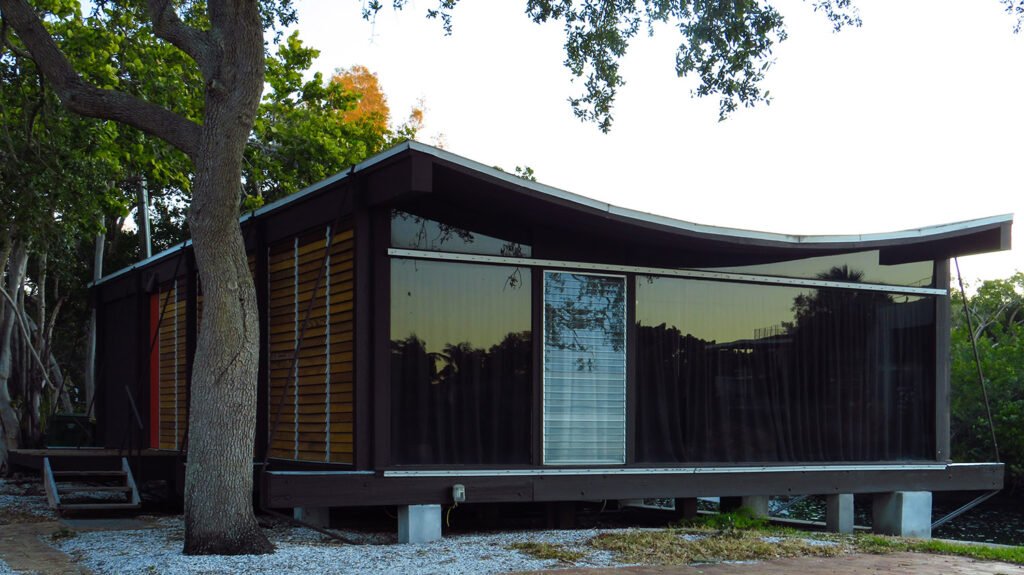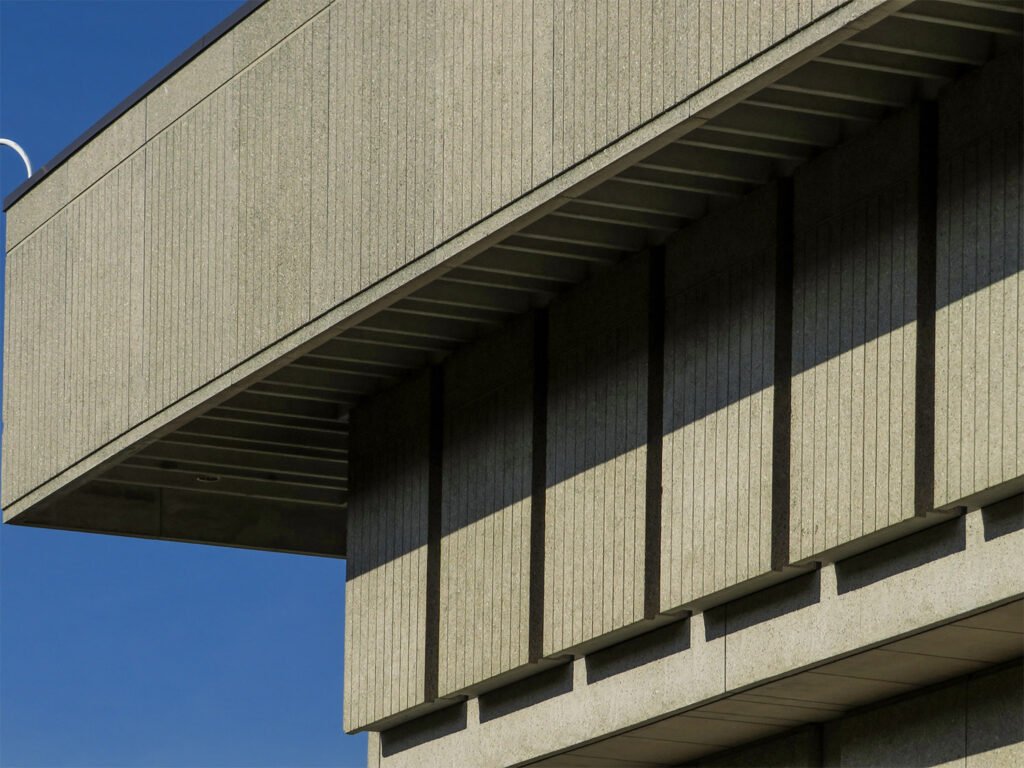
Category: Architectural Movements and Styles
-
William R. Cannon Chapel and Religious Center, Emory University – Atlanta (1981)

William R. Cannon Chapel and Religious Center at Emory University – Atlanta (1981) – designed by Paul Rudolph -
Greensboro-Guilford County Government Center – Greensboro, North Carolina (1972)
-
Innovation, Science & Technology Building, Florida Polytechnic University (2014)

Innovation, Science & Technology Building, Florida Polytechnic University – Lakeland, Florida (2014) – designed by Santiago Calatrava -
Forth Hotel – Atlanta (2024)

Forth Hotel – Old Fourth Ward, Atlanta – Morris Adjmi Architects (2024) -
Healy Guest House – Siesta Key, Florida (1948)

Healy Guest House – Siesta Key, Florida (1948) – designed by Twichell & Rudolph -
J.M. Beath House – Inman Park, Atlanta (1890)

J.M. Beath House – Inman Park, Atlanta (1890) – designed by A.M.C. Nixon The Queen Anne-style J.M. Beath House in Atlanta’s Inman Park neighborhood, better known as the Beath-Dickey House, is the only known extant work by A.M.C. Nixon, an architect who began his practice in Texas circa 18811,2 and first appeared in Atlanta in 1888.3
In late 1890, Nixon partnered with J.M.P. Lindsey under the name Nixon & Lindsey.4 The firm dissolved in 18945, shortly before a court trial in which the pair were acquitted on charges of larceny after trust stemming from their supervision of a home’s construction in 1891.6,7,8,9 The client had accused the pair of pocketing money intended for the contractors, but the matter was successfully proven to be a simple accounting error.8
After the trial, Nixon’s work in Atlanta dwindled, and in July 1896, his personal possessions and business contents were sold at public auction to pay off debt.10 Apparently in poor health, he moved to England in July 1896, where he died that October.11
Nixon was not an especially good designer, and the Beath House’s clumsy, top-heavy design is typical of his oeuvre. In 1891, he also designed the similarly styled D.H. Dougherty House12 (demolished), which has been erroneously attributed to both G.L. Norrman and W.L. Stoddart. Atlanta really doesn’t know its own history.
References
- “San Sada.” The Galveston Daily News, May 15, 1881, p. 1.
- “Twenty-Five Cent Column”. The Austin Daily Statesman, June 2, 1881, p. 3.
- “From Our Notebooks.” The Atlanta Constitution, October 1, 1888, p. 4.
- “Wanted.” The Atlanta Journal, November 15, 1890, p. 7.
- “A Dissolution of Copartnership.” The Atlanta Constitution, April 4, 1894, p. 3.
- “Architects On Trial.” The Atlanta Journal, June 21, 1894, p. 1.
- “The Architect Not Guilty.” The Atlanta Journal, June 22, 1894, p. 3.
- “Mr. Nixon Not Guilty.” The Atlanta Constitution, June 23, 1894, p. 5.
- “The Case Dismissed.” The Atlanta Journal, June 23, 1894, p. 9.
- “Public Sale of Personal Valuable Property”. The Atlanta Journal, June 15, 1896, p. 2.
- “Mr. A. McC Nixon Dead.” The Atlanta Journal, October 26, 1896, p. 5.
- The Southern Architect, June 1895, Vol. 6, No. 8, p. 167.
-
Relic Signs: Dixie Drive-In – Greenwood, South Carolina

Dixie Drive-In sign – Greenwood, South Carolina (debuted 1959) -
M.A. Hale House – Inman Park, Atlanta (1892)

This Queen Anne-style home is Atlanta’s only known extant work designed by J.W. Golucke (1857-1907), a shyster carpenter who built a career on smooth talk and grand delusions of being a legitimate architect.
A thoroughly fraudulent and incompetent designer, Golucke was one of several “Atlanta architects” of his era who did little actual work in the city, primarily peddling their shoddy plans to poor, rural communities that didn’t know any better. Thus, if you travel through backwoods Georgia, you’ll find more than a dozen county courthouses by Golucke’s design — all of them terrible.
Golucke fittingly died in a south Georgia jail cell while being held on charges of forgery, weeks after attempting suicide under the influence of drugs. His work is not celebrated here.
References
- J.W. Golucke – Wikipedia
- “Atlanta’s Growth.” The Atlanta Constitution, July 13, 1892, p. 7.
- “Mrs. M.A. Hale’s Death.” The Atlanta Constitution, March 29, 1896, p. 6.
- “J.W. Golucke Tries to Take His Life in Newton Jail”. The Atlanta Journal, October 7, 1907, p. 1.
- “Atlanta Man Tries Suicide”. The Atlanta Constitution, October 8, 1907, p. 9.
- “Death Takes J.W. Golucke”. The Atlanta Constitution, October 28, 1907, p. 6.
-

Urban Life: World Trade Center Station
I spent a day in New York back in January — it feels like a lifetime ago now.
I wasted an hour on John Street that morning trying to figure out how the hell to get a decent picture of Wilson Eyre‘s Dennison Building — that’s a problem I will return to another time.
Exasperated and edgy (I just had a large coffee from Donut Pub), I gave up and walked over to the corner of Dey and Church Streets, snapping this pic of Santiago Calatrava‘s World Trade Center Station.
It wasn’t a total loss.
-

Spelman College Center for Innovation & the Arts – Atlanta (2025)
There’s little architecture of merit in Atlanta: the city’s leaders have long despised passion and imagination, their minds too addled by the pursuit of power, suppression, and the illusion of status to spark creative inclination.
Instead, Atlanta consistently copies the architectural designs of better cities, usually a decade or more after the fact, inevitably making cheap, watered-down imitations drawn by second-rate firms.
Thus, it’s a genuine surprise when the city actually produces a building that warrants a second look, but here’s one: the new Center for Innovation & the Arts at Spelman College.
Spelman is a historically Black college for women, and the project was fittingly designed by Studio Gang of Chicago — founded by Jeanne Gang — with Goode Van Slyke Architecture — a Black-owned firm of Atlanta — as associate architect.
Like all feeble and flimsy constructs of man, architecture is gasping its last self-important breaths, and it’s becoming increasingly difficult for designers to disguise that their job is, at its essence, to make decorative boxes for people to cower and shit in.
Those who can pull off the ruse with ingenuity and style deserve recognition, however, and the designers of this project have done a fine job. Look beneath the building’s exoskeleton and you’ll find a fairly standard, 4-story, 84,000-square-foot box.
What gives the building panache are the metal sunshades and screens on its upper floors, which the Studio Gang site describes as “tuned to the angles of the sun”. OK, sure.
With two recessed porches on the north and south sides and an open space atop the southwest corner, the building gives the faint illusion that it’s floating in the sky. It’s particularly stunning at dusk when the falling light deepens the orange and brown palette.
The design recalls work by Philip Freelon, notably the National Museum of African American History and Culture in Washington, D.C., and the Harvey B. Gantt Center for African-American Arts + Culture in Charlotte, North Carolina.
Studio Gang has made more interesting and, well, innovative buildings elsewhere, but for Atlanta, this is about as wild and daring an architectural design as you’ll find.


